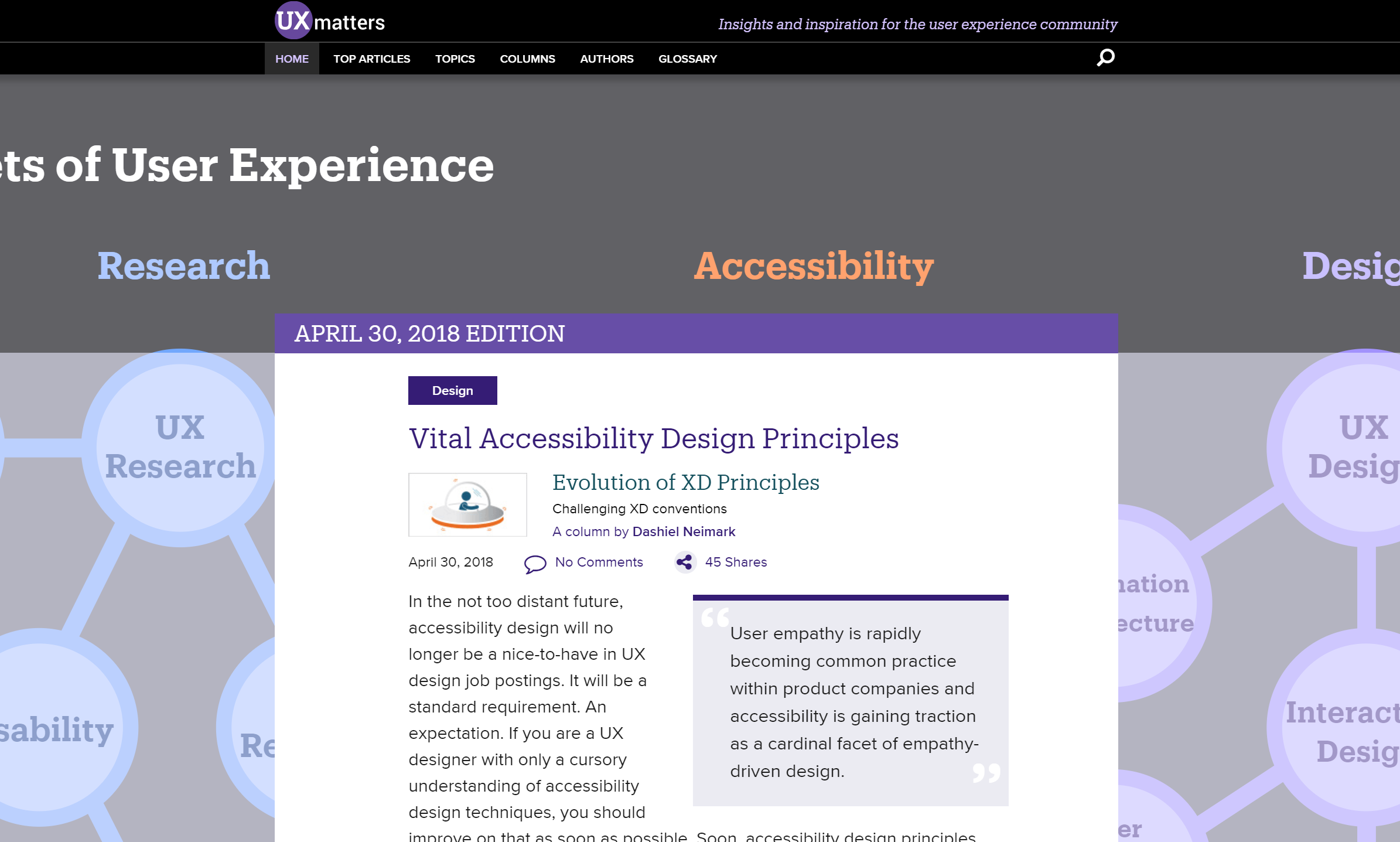30 Apr

In the not too distant future, accessibility design will no longer be a nice-to-have in UX design job postings. It will be a standard requirement. An expectation. If you are a UX designer with only a cursory understanding of accessibility design techniques, you should improve on that as soon as possible. Soon, accessibility design principles will be as well known and commonly practiced as the famous Nielsen Norman Group heuristics. User empathy is rapidly becoming common practice within product companies and accessibility is gaining traction as a cardinal facet of empathy-driven design.
Designing for diverse users—that is, children, seniors, and people with physical, cognitive, visual, or hearing impairments—requires that we pay special attention to their unique needs.
With this in mind, I have been journaling some of the accessibility considerations that are top of mind in my own practice of UX design. While the accessibility design principles I’ll present in this column certainly do not represent an exhaustive list, they do provide a great starting point—or refresher—of accessibility considerations to keep in mind as you create your next digital experience. If you design digital experiences—or work with someone who does—think about where you could have applied these principles on past projects and, more importantly, start mapping out how you might leverage them on your current or upcoming projects.

uxDash